
Feng Shui Home Office Layouts To Maximize Success For WFH
Table of Contents
Designing a home office that aligns with Feng Shui principles is about more than aesthetics—it's about creating a space that supports focus, productivity, and balance. A harmonious layout can enhance the flow of energy (Chi), making your home office a sanctuary for success. Whether your workspace is in a bedroom, living room, or a dedicated room, this guide provides actionable insights, floor plan ideas, and tools like Feng Shui office layout generators to help you create the ideal Feng Shui home office setup. Learn more about office Feng Shui 2025 to align your workspace with the energy of the year.
1. What Is Feng Shui Home Office Layout?
Feng Shui, the ancient Chinese art of arranging spaces to harmonize energy flow, is particularly useful for home offices. A well-planned Feng Shui home office layout improves productivity, reduces stress, and fosters a sense of control. It’s about finding the right balance between functionality and energy alignment, ensuring that every piece of furniture and décor contributes to the positive energy of the space.
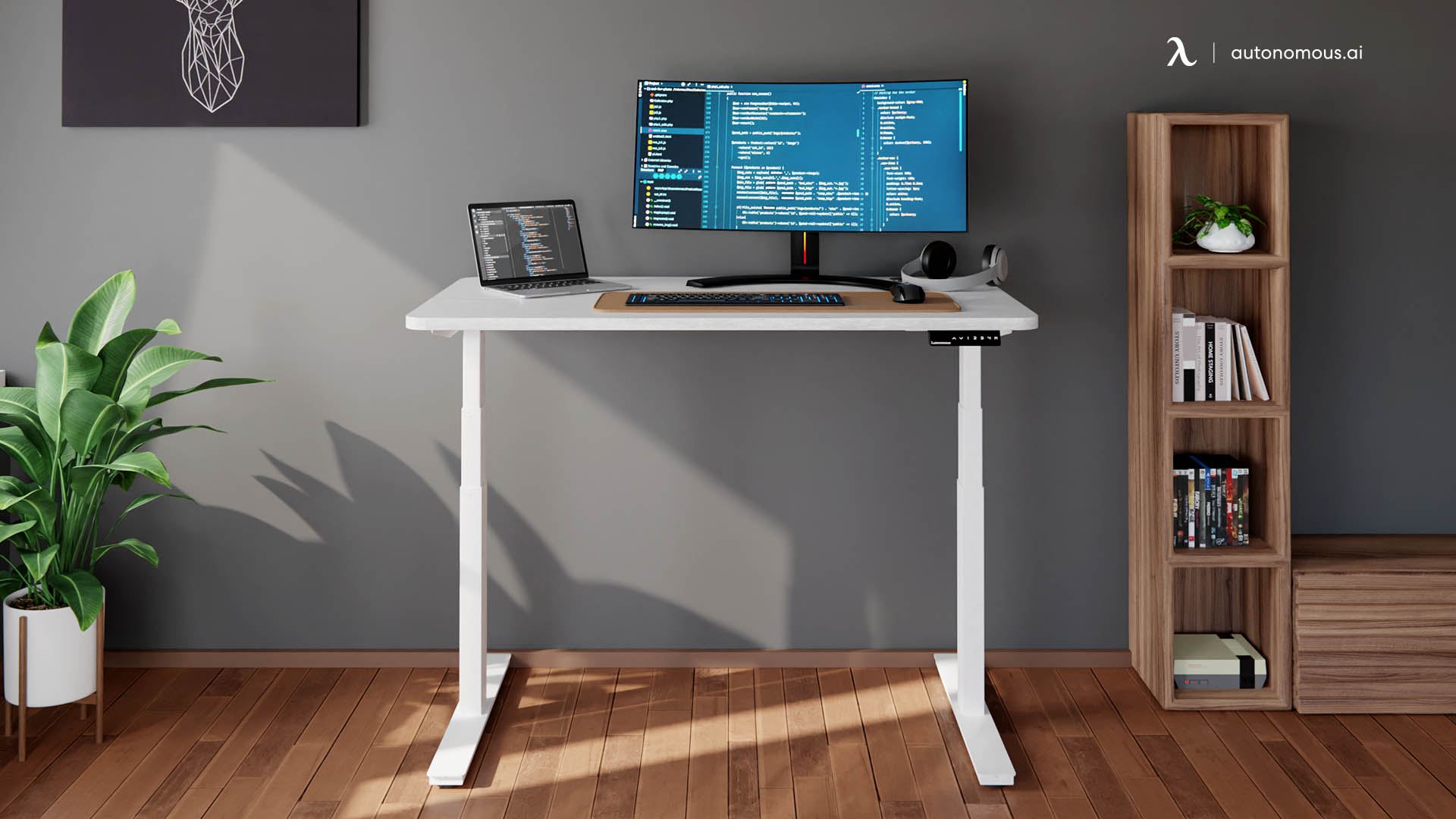
2. Principles of Feng Shui in Home Office Design
Before diving into specific layouts, it’s essential to understand the core principles of Feng Shui for office design:
- Commanding Position:
he commanding position is a critical concept in Feng Shui that symbolizes control, security, and empowerment. Ideally, your standing computer desk should face the entrance to the room without being directly in line with the door. This arrangement allows you to see who enters while maintaining a sense of authority over your space.
When sitting in this position, you naturally feel more aware and secure, which can boost confidence and reduce anxiety. If placing your desk in the commanding position is not feasible, you can use mirrors strategically to reflect the entrance and achieve the same effect.
- Balance of Elements:
In Feng Shui, balancing the five elements—wood, fire, earth, metal, and water—is essential for creating a harmonious workspace. Each element represents specific energies and qualities that influence your productivity, focus, and well-being.
| Element | Symbolism | How to Incorporate | Impact on Energy |
|---|---|---|---|
| Wood | Growth and Creativity | Use wooden desks, furniture, or decorative items like bamboo or wooden picture frames. | Inspires innovation and supports personal growth. |
| Fire | Passion and Transformation | Add red accents, candles, or a lamp with a warm glow. | Sparks motivation and drives action. |
| Earth | Stability and Grounding | Include pottery, stone decorations, or décor in earthy tones like beige and brown. | Enhances focus and brings a sense of stability. |
| Metal | Precision and Focus | Use metallic desk accessories, a sleek metal lamp, or a modern chair with metal accents. | Promotes clarity, organization, and discipline. |
| Water | Intuition and Clarity | Introduce a small fountain, water feature, or blue-toned décor items like artwork or textiles. | Encourages introspection and calm decision-making. |
Striking the right balance between these elements ensures a harmonious and dynamic energy flow, catering to both productivity and relaxation.
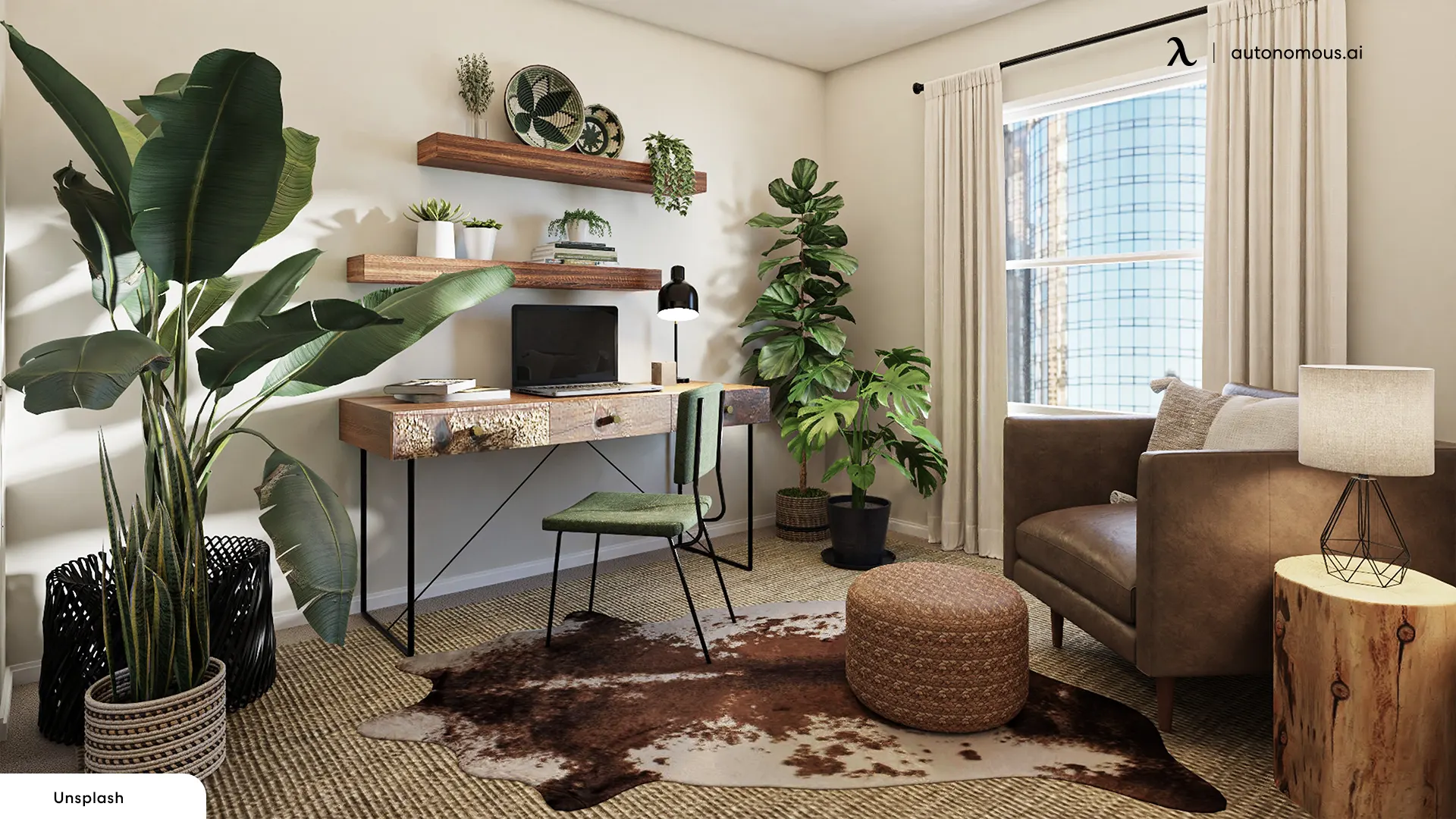
- Declutter for Energy Flow:
Clutter disrupts the natural flow of Chi, leading to feelings of stress and disorganization. A clean and organized workspace is not just visually appealing—it’s a cornerstone of Feng Shui.
Start by decluttering your desk daily. Keep only essential items on your desk, such as your laptop, a notebook, and a few personal touches like a plant or family photo. Use organizers, storage boxes, or filing cabinets to store papers and office supplies.
Remember, every item in your workspace should serve a purpose or bring joy. By keeping the space tidy, you allow positive energy to flow freely, enhancing focus and creativity.
- Natural Light and Air:
Maximizing natural light and airflow is vital in Feng Shui. Sunlight invigorates the space, boosting your mood and productivity, while fresh air keeps the energy vibrant and lively.
Position your desk near a window to take advantage of natural light, but avoid sitting with your back to the window, as it can cause energy to “escape.” If natural light is limited, use full-spectrum light bulbs to mimic daylight and maintain a bright workspace.
For airflow, ensure your space is well-ventilated. Incorporate air-purifying plants like peace lilies or Boston ferns to improve air quality and enhance the overall energy of the room.

- Yin & Yang:
Feng Shui is a concept that takes into account diverse types of energy, including yin and yang, some of the most common concepts in our pop culture. These energies are opposite to each other. While yin is “dark” and “passive,” yang is “bright” and “active.” You can bring these energies to your home office to help you bring a bit more balance into it.
For instance, you can benefit from yang energy while you're working, while yin energy can help you succumb to relaxation once your workday is over. You can do this by playing around with the lighting. While you're working, you can keep the area as bright as possible with the help of lamps or a window. Once your work session is over, you can try to reduce that brightness and unplug the electronics to symbolize the end of your work day.

- What About Windows?
A feng shui home office layout with a window seems quite tempting. However, you should know that your glass top office desk should be behind a solid wall. If you place your desk behind a window, you'll be impeding the proper flow of energy, which can cause instability and can make you feel overwhelmed.
There are different ways in which you can place your desk without it directly facing a window or being behind one. However, if you have no other choice but to place your desk behind a window, you can use a high back office chair or perhaps put a large plant in front of it to “block” it and prevent the energies from exiting the room.
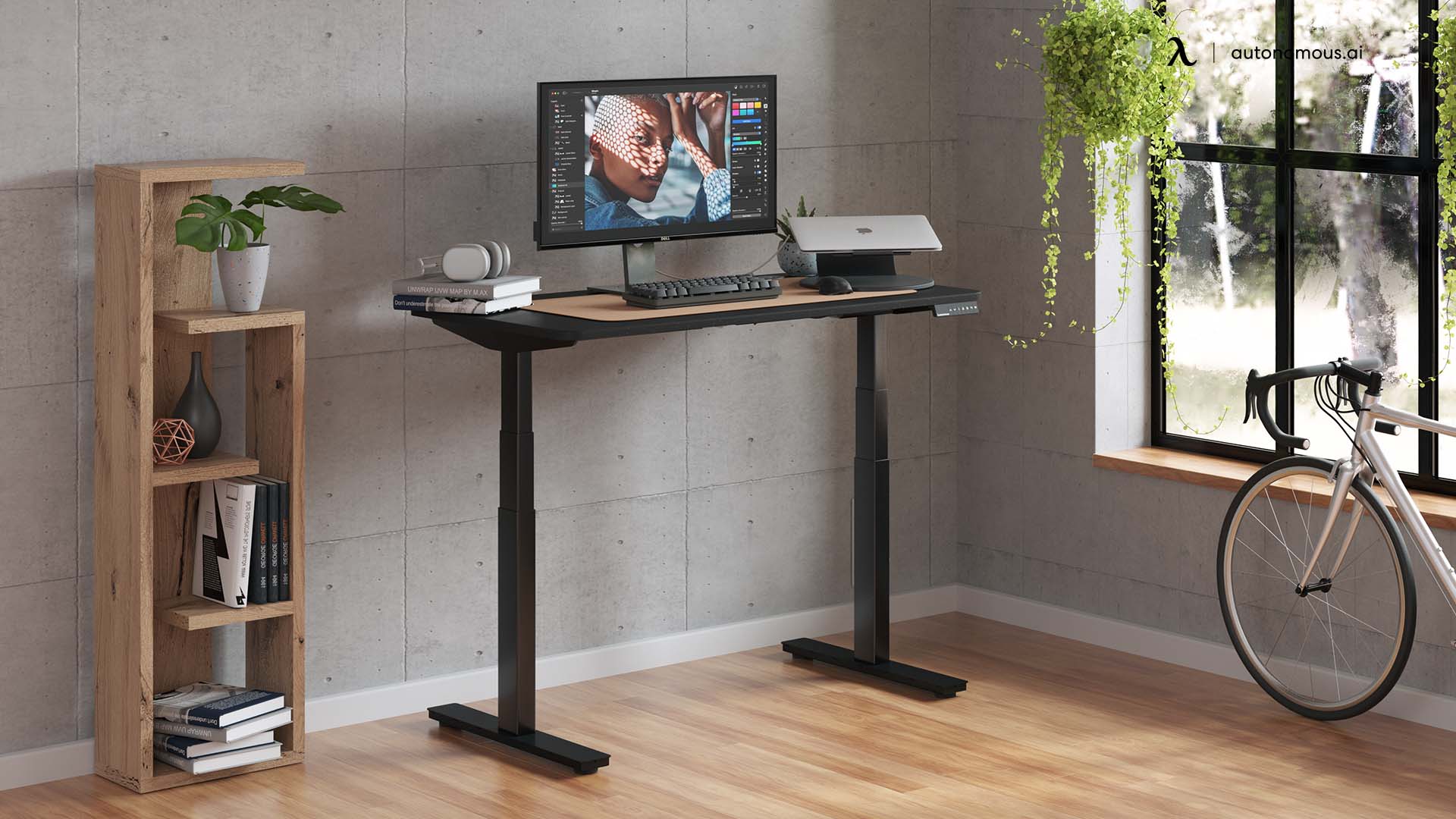
3. Feng Shui Home Office Layout Examples
A. Dedicated Home Office Layout
If you have a separate room for your office, it provides the most flexibility for designing with Feng Shui principles:
- Desk Placement: Position the desk in the commanding position, diagonally facing the door but not directly in line with it.
- Storage: Place storage units like bookshelves or cabinets on the sides to create balance without obstructing energy flow.
- Décor: Add plants like bamboo in the southeast corner to symbolize prosperity, and use calming artwork or mirrors to enhance energy flow.
B. Feng Shui Home Office in the Bedroom
Working in a bedroom requires careful consideration to maintain harmony between work and rest:
- Desk Location: Avoid placing the desk directly next to or facing the bed. Use a screen or curtain to separate the workspace.
- Colors and Décor: Choose neutral or calming tones for the desk area to avoid overwhelming the room’s relaxing energy. Explore these bedroom layout ideas with desks for inspiration.
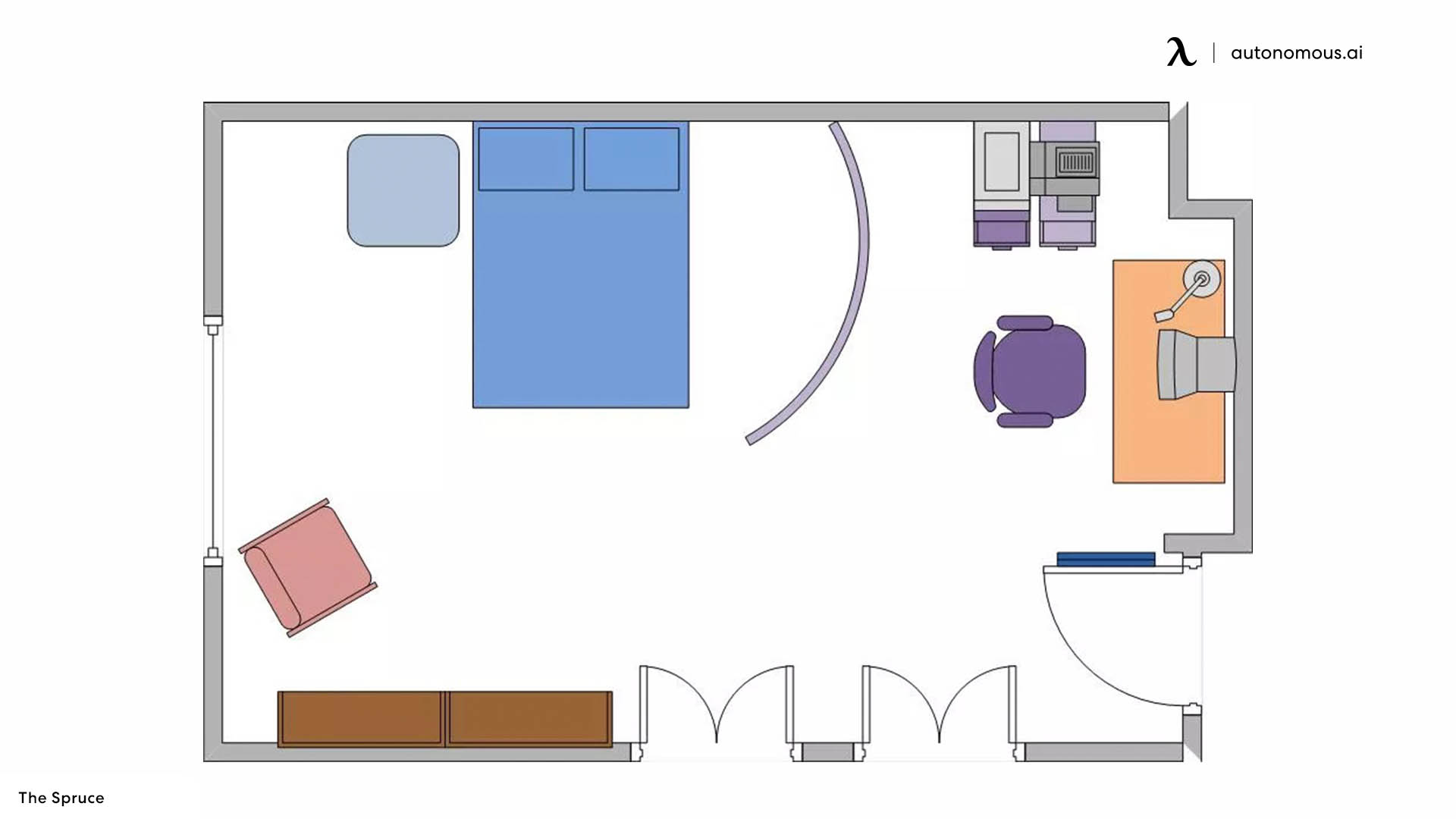
C. Feng Shui Home Office in the Living Room
Integrating an office into a living room involves blending productivity with comfort:
- Zoning: Use area rugs or furniture placement to define the office zone without disrupting the living room’s flow.
- Furniture Selection: Opt for multifunctional furniture, like foldable desks or storage ottomans, to maintain a clean look. For more tips, check out living room office Feng Shui ideas.
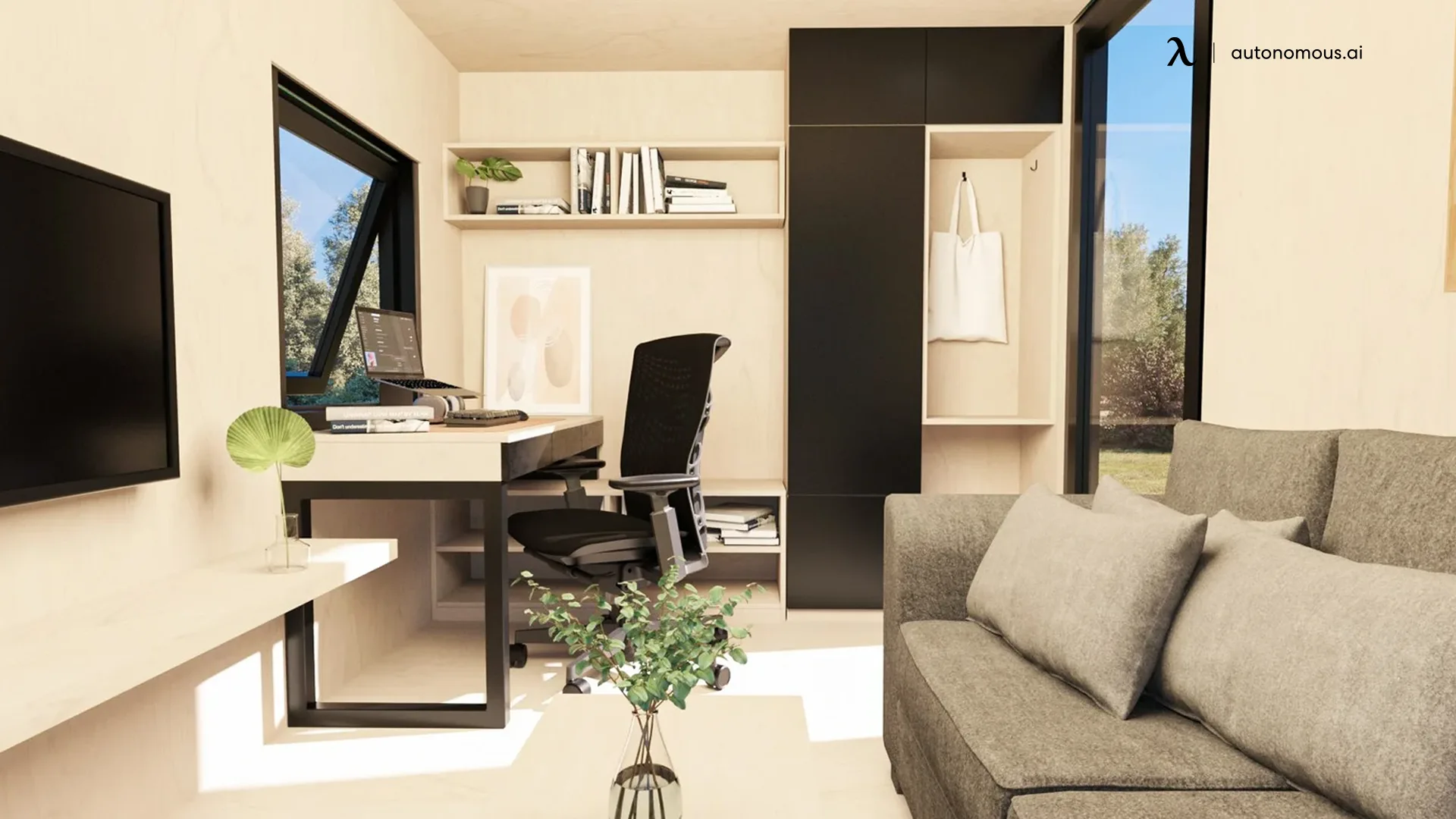

D. Small Home Office Layout
Compact spaces demand creativity to balance functionality and energy flow:
- Vertical Storage: Maximize wall space with shelves or pegboards to keep the desk area clear.
- Desk Placement: Position the desk against a wall but avoid facing it directly—use mirrors or artwork to expand the space visually.
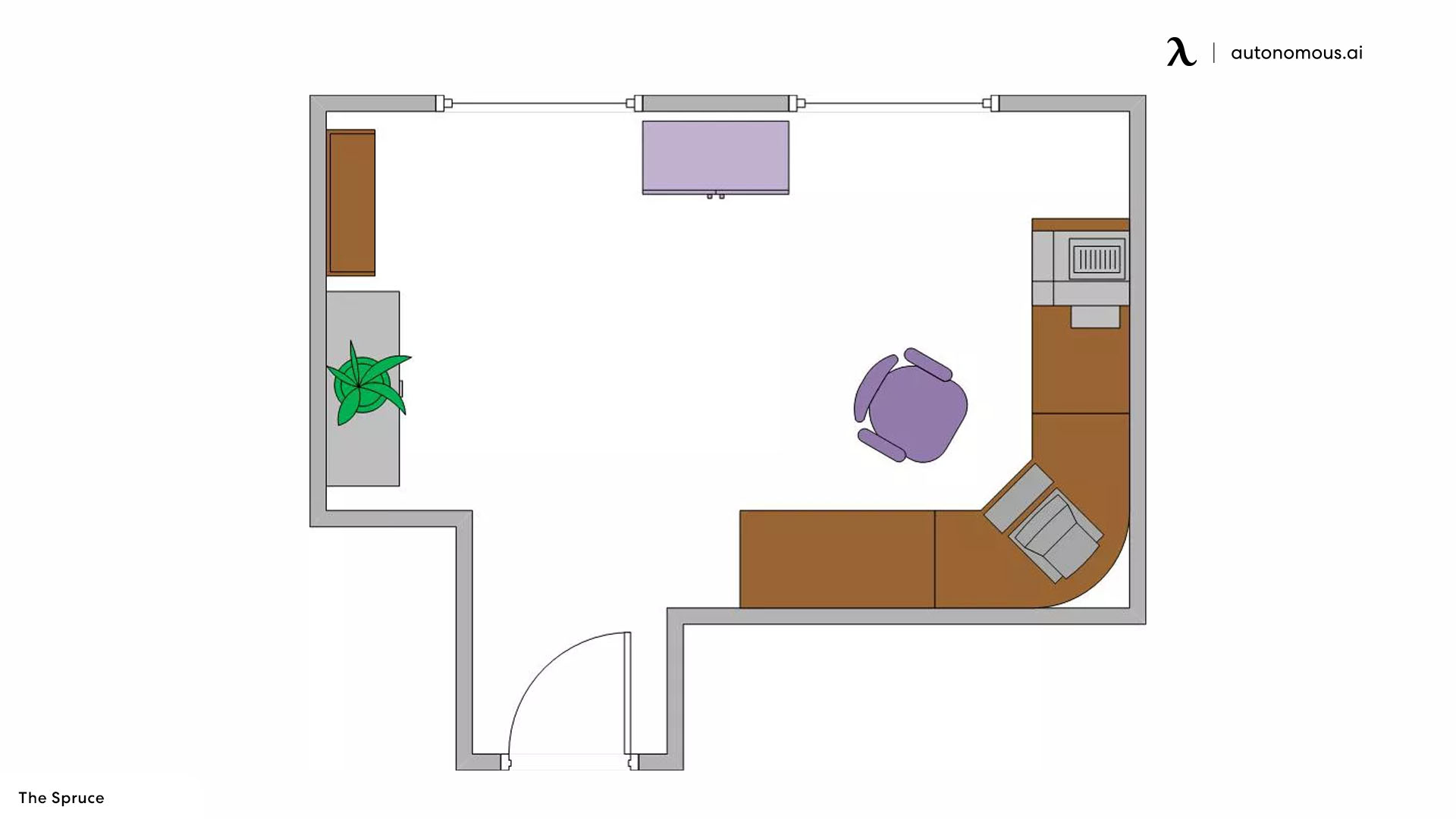
4. Feng Shui Home Layout for Different Work Styles
Every profession and work style comes with unique demands, and tailoring your Feng Shui home office layout to these needs can significantly enhance productivity and energy flow. Whether you’re a creative professional, a strategist, or a multitasker, aligning your workspace with Feng Shui principles ensures that your environment supports your work goals.
4.1. Creative Professionals
For those who rely on creativity, the workspace should encourage free-flowing ideas while grounding the mind to focus on tasks.
Desk Placement: Position your desk in the commanding position, facing the entrance to the room but not directly aligned with the door. Ensure you have ample open space around your desk to symbolize openness to ideas.
Incorporate Color: Use greens and blues in your workspace, as these colors promote creativity and relaxation. Add small accents of red or orange for bursts of inspiration and energy. For more tips, explore home office colors to find the perfect palette.
Decorative Elements: Include inspirational artwork, a vision board, or creative tools like sketchbooks and pens. Green plants like pothos or bamboo can stimulate growth and vitality.
Lighting: Maximize natural light by positioning your desk near a window. If natural light is limited, use a daylight simulation lamp to maintain an energizing workspace.
Balance of Elements: Integrate wooden desks for growth (wood element), water features or blue accents for creativity (water element), and metal accessories for clarity (metal element).
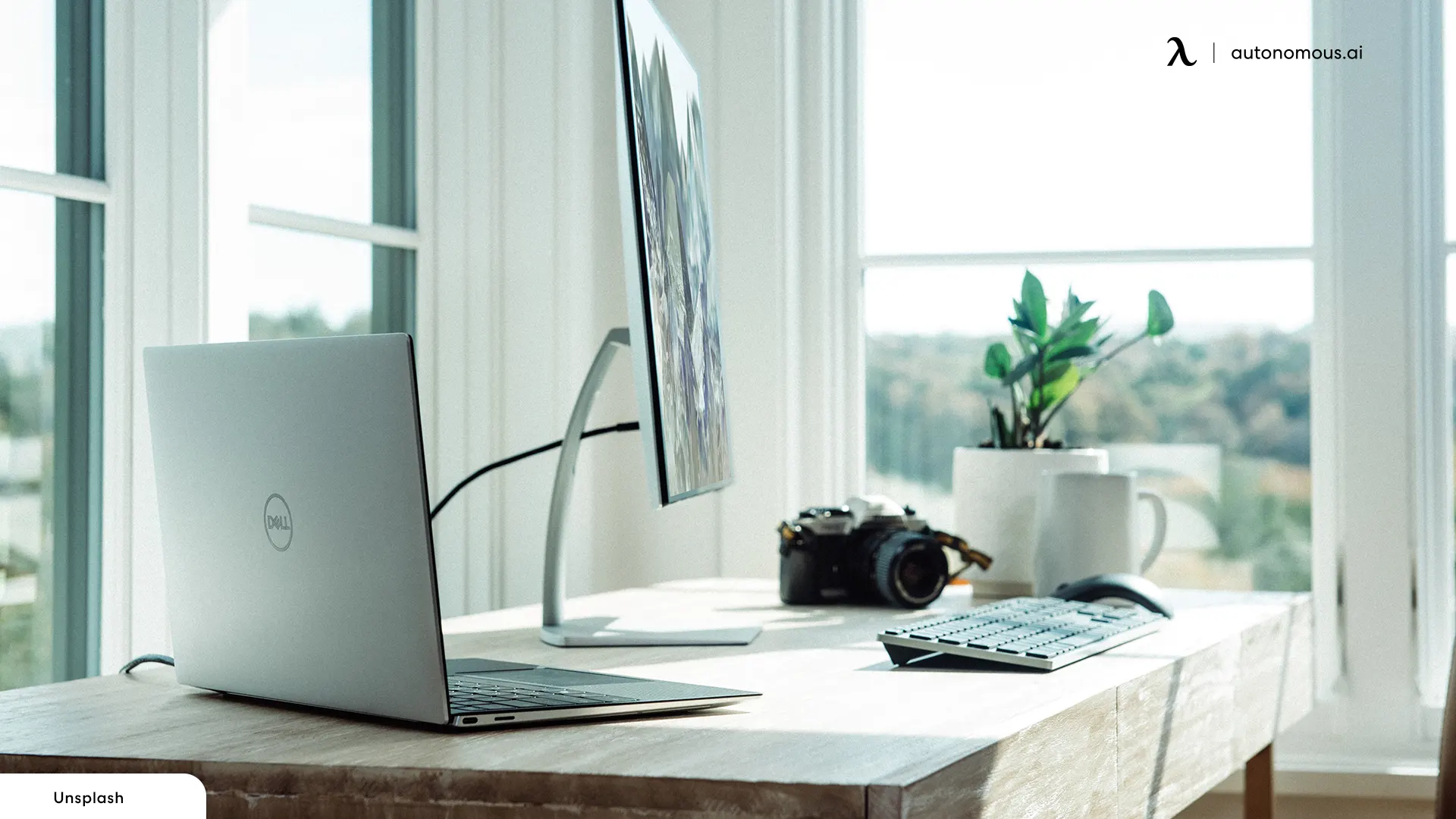
4.2. Analytical Professionals
For analytical roles that require intense focus and organization, the workspace should minimize distractions and foster precision.
Desk Placement: Place your desk against a solid wall for stability, but ensure you have a view of the door to maintain control and awareness.
Color Palette: Earth tones like beige, brown, and yellow create a grounding effect, while metallic accents like silver or gold can enhance clarity.
Organizational Tools: Incorporate desk organizers, filing cabinets, and cable management systems to keep your workspace clean and distraction-free.
Decorative Elements: Use simple, functional décor such as clocks or minimalistic artwork. Avoid overly vibrant or chaotic designs that may disrupt focus.
Lighting: Use task lighting to illuminate your work area directly and avoid glare. Combine this with warm ambient lighting for a calm yet alert environment.

4.3. Multitaskers
Multitaskers often juggle several responsibilities, so their workspace must be both functional and dynamic to support their workflow.
Desk Placement: Use an L-shaped or corner desk to separate areas for different tasks. Position the main work area in the commanding position and use the secondary area for additional tools like printers or whiteboards.
Color Palette: Incorporate energizing colors like yellow or orange for creativity and focus, balanced with calming blues or greens to reduce stress.
Storage Solutions: Use vertical storage, such as shelves or pegboards, to keep essential tools within reach. Drawer organizers can help separate work materials for different projects.
Technology Integration: Place monitors, chargers, and gadgets strategically to reduce cable clutter. Use ergonomic accessories like monitor arms or standing desk converters to optimize functionality.
Decorative Elements: Add motivational quotes, team schedules, or vision boards to keep your goals front and center. Include plants for a touch of nature and balance.
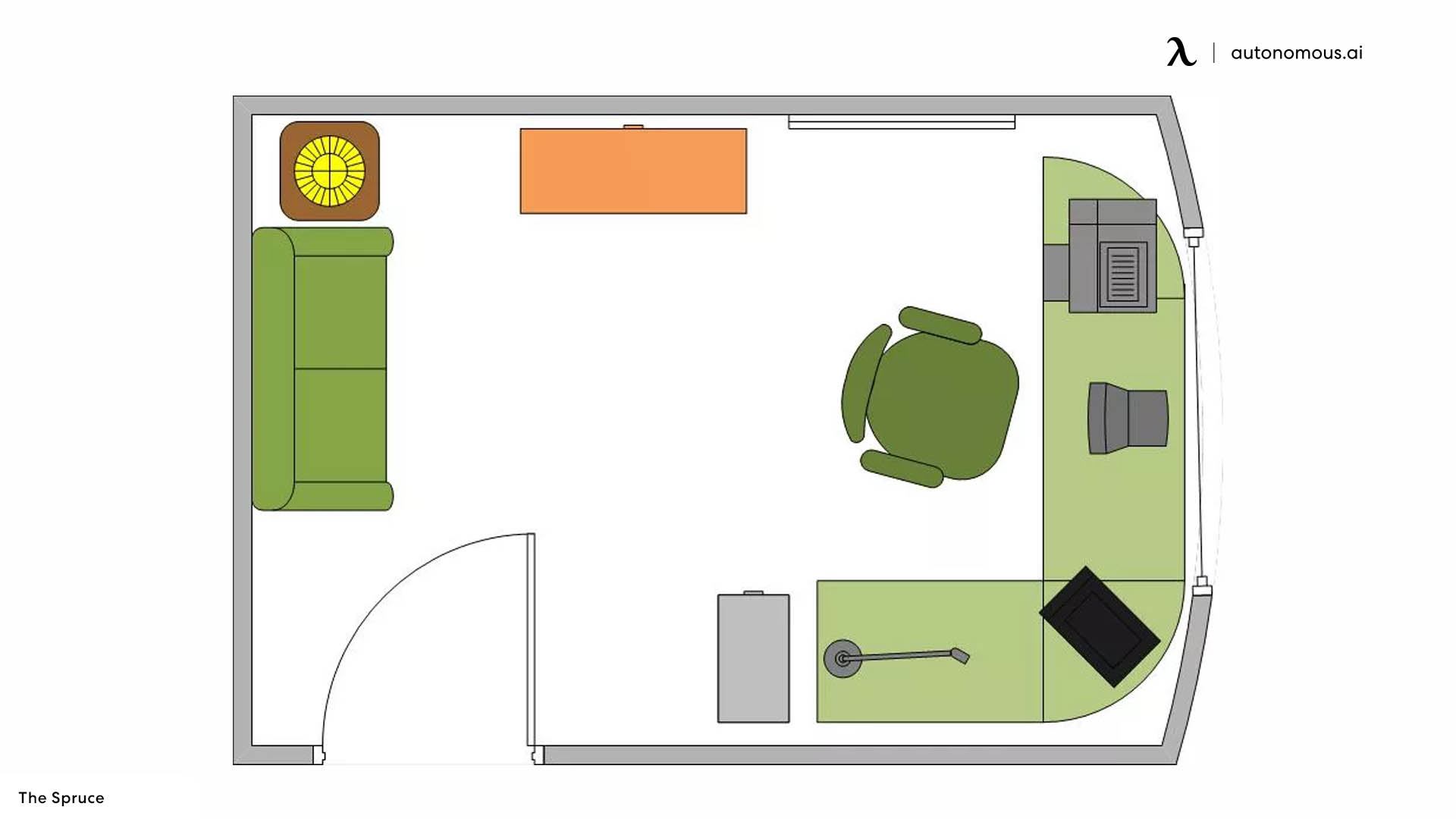
4.4. Wellness and Mindfulness Professionals
For professionals who guide others toward wellness and mindfulness, the home office must exude calm, balance, and positivity.
Desk Placement: Position your desk near a window to connect with nature while maintaining the commanding position.
Color Palette: Use soft, neutral tones like beige, white, and light pastels to create a soothing environment. Add small pops of green or blue for harmony.
Decorative Elements: Include calming artwork, a small indoor fountain, or crystals like amethyst for tranquility. Diffusers with essential oils can further enhance the space.
Lighting: Use natural light and soft, adjustable desk lamps to maintain a peaceful ambiance. Avoid harsh lighting that could disrupt the calming energy.
Balance of Elements: Incorporate all five Feng Shui elements—wood (furniture), water (fountain or blue accents), fire (candles), earth (stone décor), and metal (frames or organizers)—to ensure harmony.
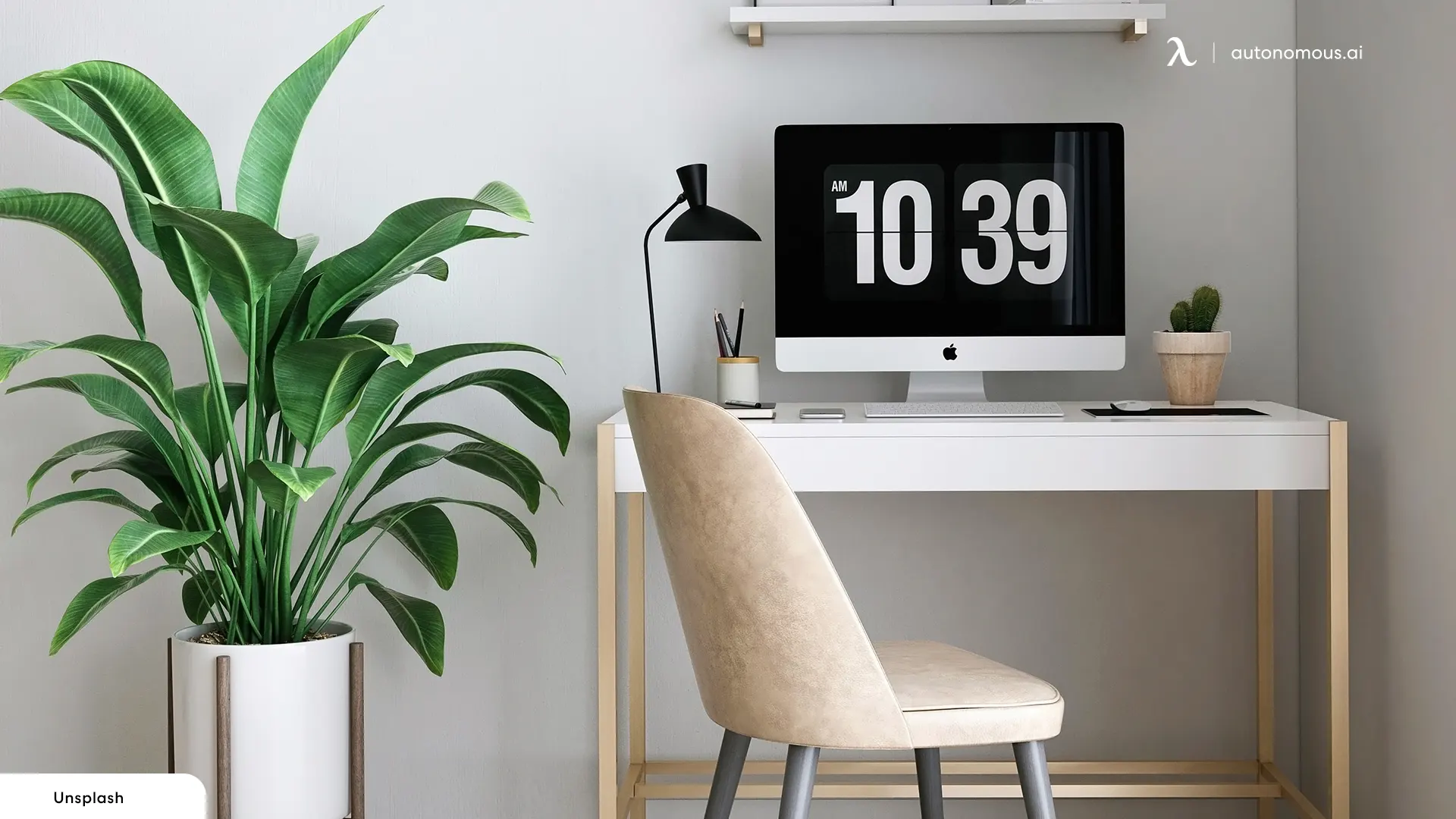
4.5. Tech Professionals
For those who rely heavily on technology, the workspace must support efficiency while preventing energy stagnation from excessive electronic use.
Desk Placement: Ensure your desk faces into the room, not the wall, to keep energy flowing. Use mirrors strategically to reflect light and create depth if your desk placement feels boxed in.
Technology Setup: Position monitors at eye level and use cable management tools to maintain a clean aesthetic. Consider using standing desks with power outlet or adjustable office chairs to support ergonomic health.
Decorative Elements: Add a small water feature or plant to counterbalance the energetic intensity of electronic devices. Incorporate metallic or modern minimalist décor for a tech-forward aesthetic.
Lighting: Use LED desk lamps to minimize strain on the eyes. Position lighting to reduce screen glare while maintaining an even brightness in the room.
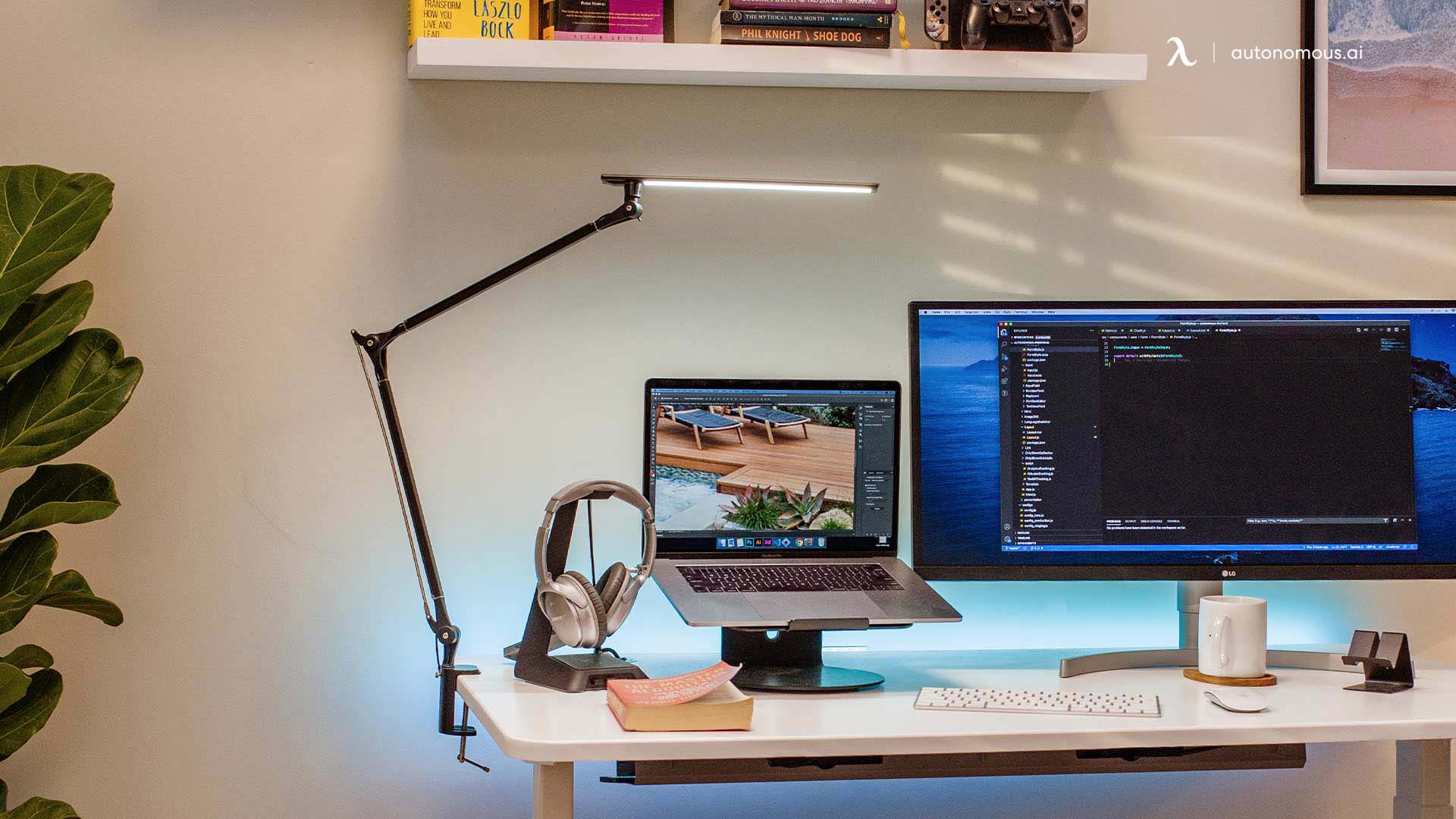
5. What Should You Avoid?
If you want to make sure that you have a balanced feng shui home office, you should avoid some things when possible:
- Eliminate clutter. Your home office should be as organized as possible, as it can help you maintain a clear and focused mind. Everything in the area should be as organized as possible.
- Avoid sharp angles. While this isn't exactly 100% possible in modern layouts, you can reposition the sharp objects in your room, so they are not directly facing you during your work sessions.
- Don’t sit in certain positions. If you work with other people in the same room, try not to sit back-to-back, as it can generate conflict. Similarly, you shouldn’t sit face to face.
- Keep the colors neutral. While it’s important to include some color in your home office, such as in the form of office desk accessories, try not to get too carried away with it. Otherwise, it can make the space feel overwhelming.
There are different ways to make a good feng shui home office where you can spend your work days without feeling overwhelmed. This practice can have tons of positive effects on your mind and body in the long run.
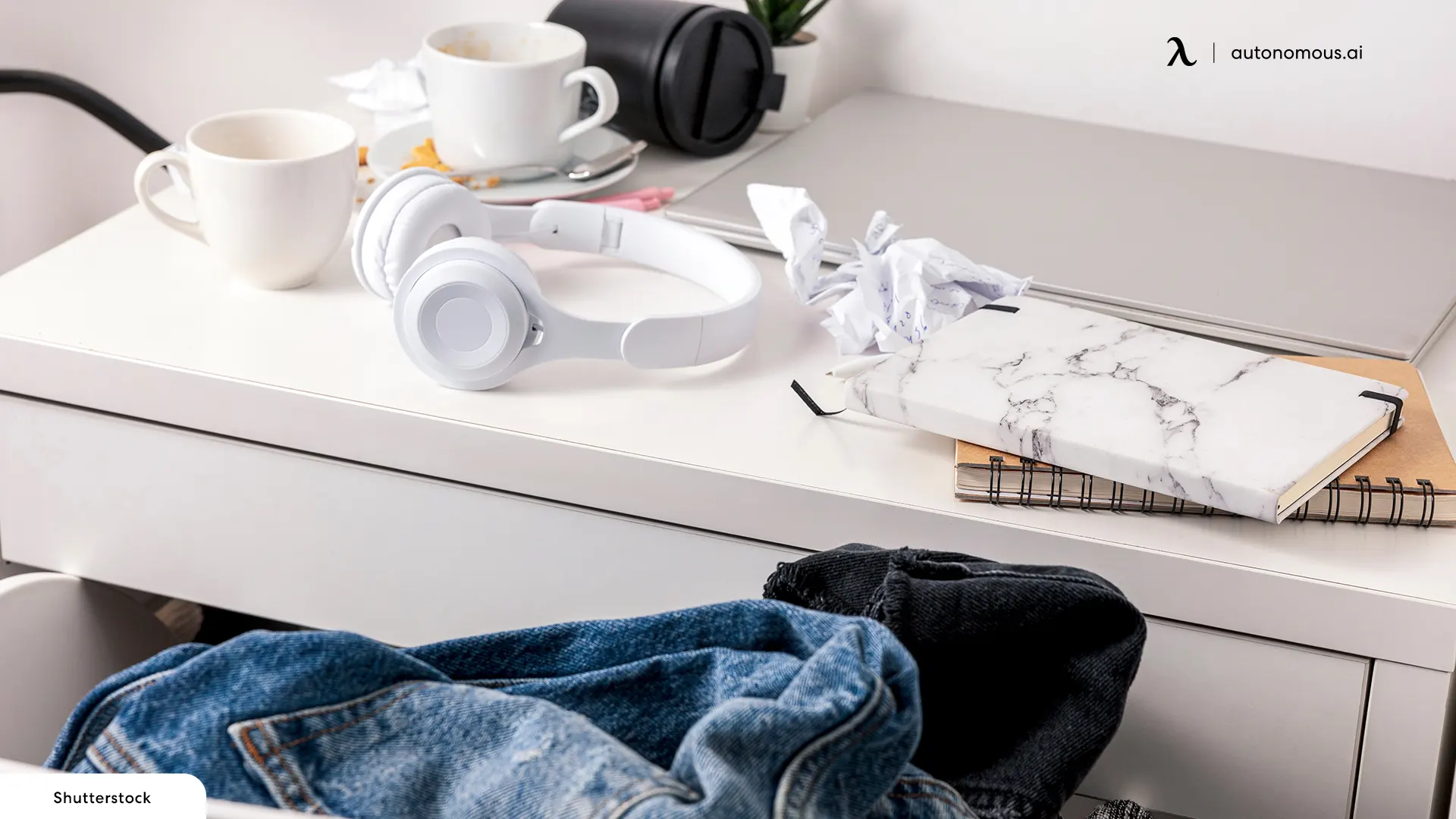
6. Using Feng Shui Office Layout Generators
For those unsure how to arrange their space, Feng Shui office layout generators can simplify the process. These tools allow you to input room dimensions and furniture details, generating layouts that align with Feng Shui principles.
- RoomSketcher: Create 3D layouts and experiment with desk placement and furniture arrangements.
- Planner 5D: A user-friendly tool for designing Feng Shui-inspired layouts.
- Feng Shui Compass App: Helps you determine auspicious directions for desk placement based on your Kua number.
These tools are particularly useful for visualizing how furniture and décor interact with the space.
Conclusion
A thoughtfully designed Feng Shui home office layout can transform your workspace into a hub of productivity and balance. Whether you’re working in a dedicated room, bedroom, or living room, applying these principles ensures that your environment supports your goals and well-being. By using layout examples and tools like Feng Shui office layout generators, you can create a personalized workspace that aligns with both functionality and energy flow.
Stay connected with us!
Subscribe to our weekly updates to stay in the loop about our latest innovations and community news!
Interested in a Link Placement?
Spread the word
.svg)



/https://storage.googleapis.com/s3-autonomous-upgrade-3/production/ecm/230914/bulk-order-sep-2023-720x1200-CTA-min.jpg)

/https://storage.googleapis.com/s3-autonomous-upgrade-3/production/ecm/230824/Mark-074a7a11-ff01-44fd-a204-55d192ab5798.jpg)